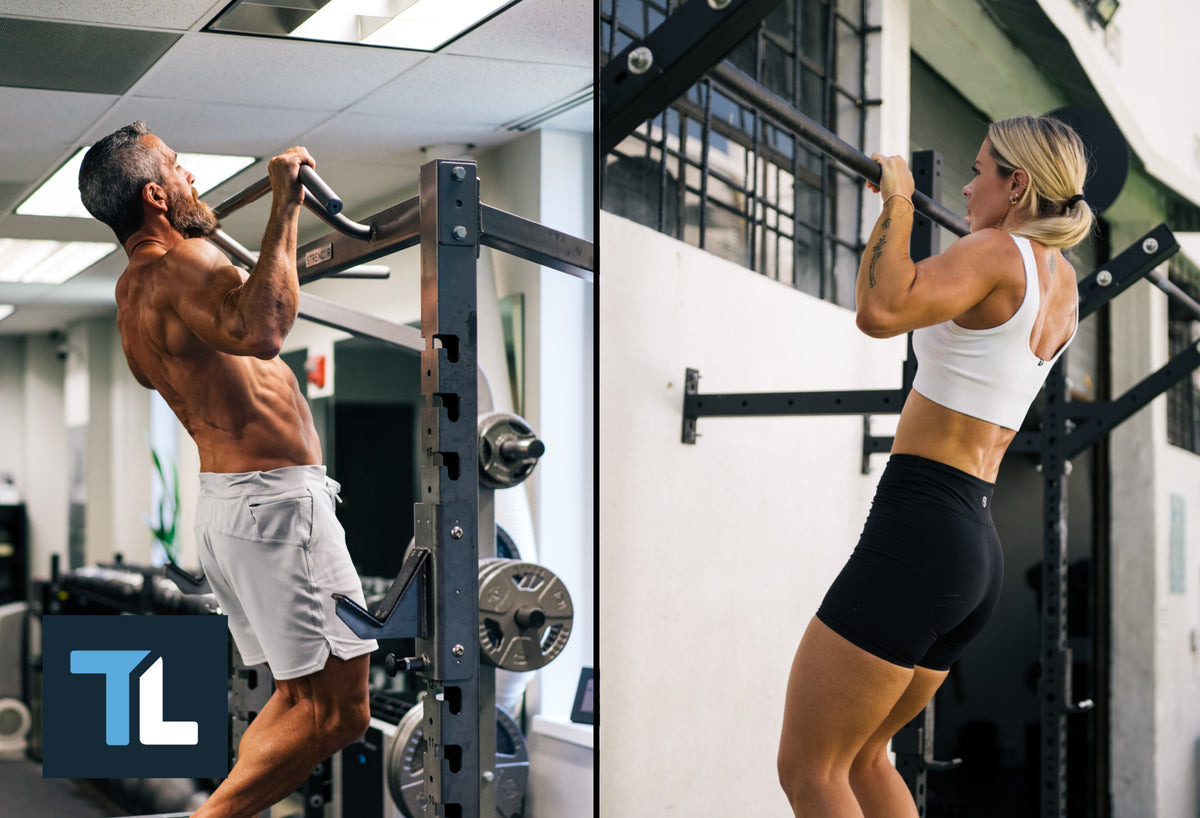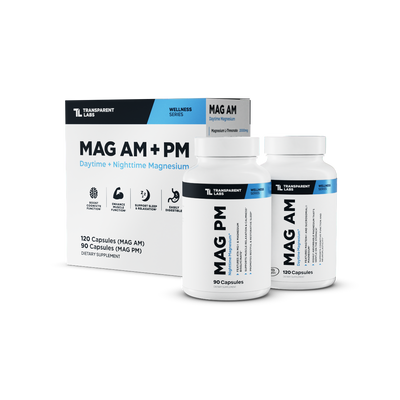What Muscles Do Pull-Ups Work? | Benefits and Form Explained

What Muscles Do Pull-Ups Work? | Benefits and Form Explained
Pull-ups have long been touted as one of the most effective bodyweight exercises for building upper-body strength. Being a bodyweight exercise, the pull-up requires minimal equipment and can be performed almost anywhere, even in a doorway.
However, the simplicity of the pull-up shouldn't undermine its significance in a resistance-training program, as it remains one of the best exercises to develop the upper-body muscles.
Read on as we cover the specifics of which muscles pull-ups work, how grip variations play a role in muscle activation, and how to do a pull-up correctly for size and strength gains.
Muscles Worked by Pull-Ups
Pull-ups primarily target the latissimus dorsi (aka "lats"), the largest upper body muscle (by surface area) [1]. This muscle is responsible for the downward and inward movement of the arms.
In addition to the lats, pull-ups also engage the biceps brachii of the upper arms. The biceps are actively involved during the ascent phase of the pull-up, flexing the elbow as the body is pulled upwards.
The trapezius and rhomboids, muscles situated in the upper back, are also involved in pull-ups. These muscles aid in retracting the scapulae (shoulder blades) as you pull yourself up, promoting stability of the shoulder girdle throughout the movement.
As such, pull-ups are a great resistance exercise for developing overall pulling strength, which can translate to improvements in other upper-body exercises (e.g. barbell rows and lat pulldowns).
Pull-Ups vs. Chin-Ups
Pull-ups and chin-ups are two prevalent forms of upper body exercises that share fundamental movement patterns but differ in grip orientation, altering muscle engagement and difficulty level. Pull-ups are typically performed with a pronated/overhand grip (palms facing away from the body), emphasizing the latissimus dorsi and long head of the biceps brachii.
In contrast, chin-ups entail a supinated/underhand grip (palms facing towards the body), which recruits the short head of the biceps brachii to a greater degree and provides a more accessible point of entry for individuals new to resistance training.
As you can see, both your lats and biceps take on the heavy-duty when doing pull-ups and chin-ups. Studies have shown differing electromyographic activity between these movements, with chin-ups offering greater overall biceps activation and pull-ups enhancing engagement of the posterior chain, particularly the latissimus dorsi [2].

Pull-Up Variations and Their Effects on Muscle Engagement
Pull-up variations significantly impact muscle engagement, primarily through alterations in grip width and technique. Research has highlighted distinct electromyographic activation patterns when comparing pull-up grip widths. These variations can strategically target specific muscle groups while protecting the shoulder joint.
For example, wide-grip pull-ups shift a greater focus onto the upper fibers of the latissimus dorsi, while a narrow grip tends to increase biceps brachii activation due to the reduced leverage on the elbow joint [3].
This alteration in muscle engagement can be further demonstrated in the neutral-grip pull-up. Neutral grips, which involve parallel hand positioning, have been shown to optimize muscle activity within the brachioradialis (one of the forearm muscles) and the biceps brachii. This grip is often recommended for those looking to maximize elbow flexor recruitment while minimizing shoulder strain.
Moreover, implementing mixed or staggered grips introduces an asymmetric load on the body, challenging stabilizer muscles like the teres major more than standard pull-ups. This type of variation can be particularly useful for addressing unilateral strength discrepancies.
How to Do a Pull-Up Properly
-
Grip the Bar: Begin with a pronated grip, where your palms face away from you. Hands should be slightly wider than shoulder-width apart.
-
Hang with Arms Extended: Engage your core and back muscles, and allow your body to hang with your arms fully extended. Ensure your shoulders are not shrugged.
-
Initiate the Pull: Start the upward phase by pulling through your elbows. Visualize pulling your shoulder blades down and toward each other as you begin to ascend.
-
Continue to Pull Up: Focus on keeping your chest lifted as you pull your body upward until your chin is at or above the bar level. Your upper chest or clavicle ideally touches the bar.
-
Pause Briefly: At the top, pause momentarily to maximize muscle contraction. Avoid using momentum.
-
Controlled Descent: Lower yourself slowly and with control back to the starting position, fully extending the arms. This eccentric phase is crucial for muscle activation and strengthening.
-
Repeat: Perform the desired number of repetitions, maintaining form at all times.
How to Progress on Pull-Ups
If you're currently unable to do a pull-up using just your bodyweight, then it's best to start by doing assisted pull-ups using either a machine or resistance bands. Start by using enough assistance to do sets of 8-12 repetitions before reaching failure. The goal is to continually lessen the amount of assistance you need to complete 8-12 strict reps of pull-ups. Over time, you will become stronger and hone the technique needed to do a pull-up without any assistance.
If you can do several pull-ups without assistance, strive to beat your previous rep-max every week. For example, if you could perform 3 sets of 10 pull-ups one week, try and perform either 4 sets of 10 reps or 3 sets of 12 reps the following week.
Once you can do a strict set of 20+ pull-ups (unassisted), it's time to start adding weight. You can use chains, resistance bands, or a loop belt to add resistance.
Home Gym and Outdoor Options

If you don't have access to a gym with a power rack or pull-up machine, a pull-up bar is an inexpensive and portable option for doing pull-ups at home/in a doorway. Resistance bands can also be used to help build strength and progress towards unassisted pull-ups.
Final Thoughts: Pull-Ups for Strength and Size
Of the muscles pull-ups work, the upper arm muscles (namely the biceps brachii) and the latissimus dorsi carry most of the load. However, the pull-up is a timeless bodyweight exercise that works an array of upper-body muscles, making it a staple for building size and strength.
The key takeaway is that most people stand to benefit by including at least one pull-up variation in their workout routine, especially if you follow a Push-Pull-Legs routine.









